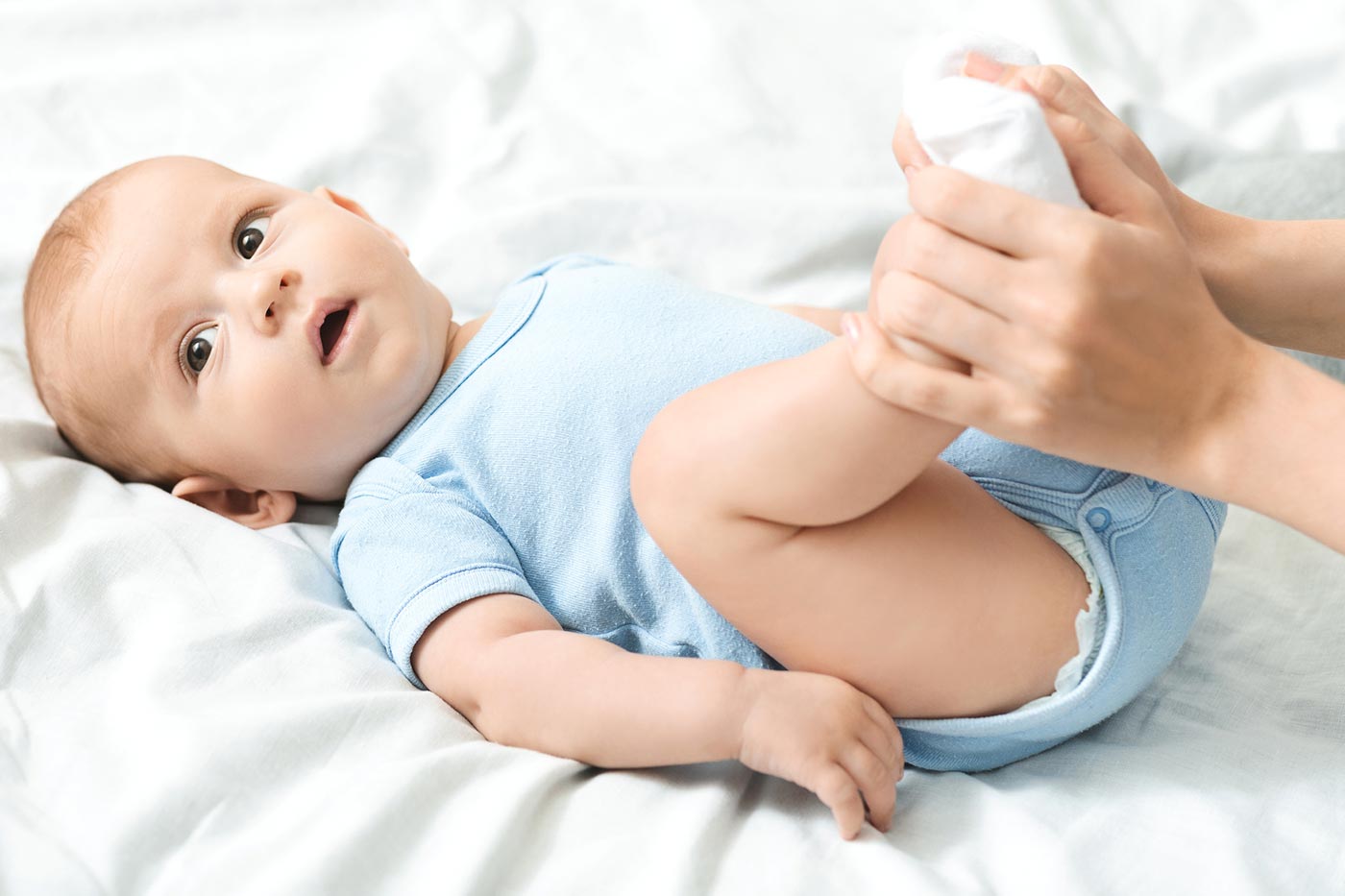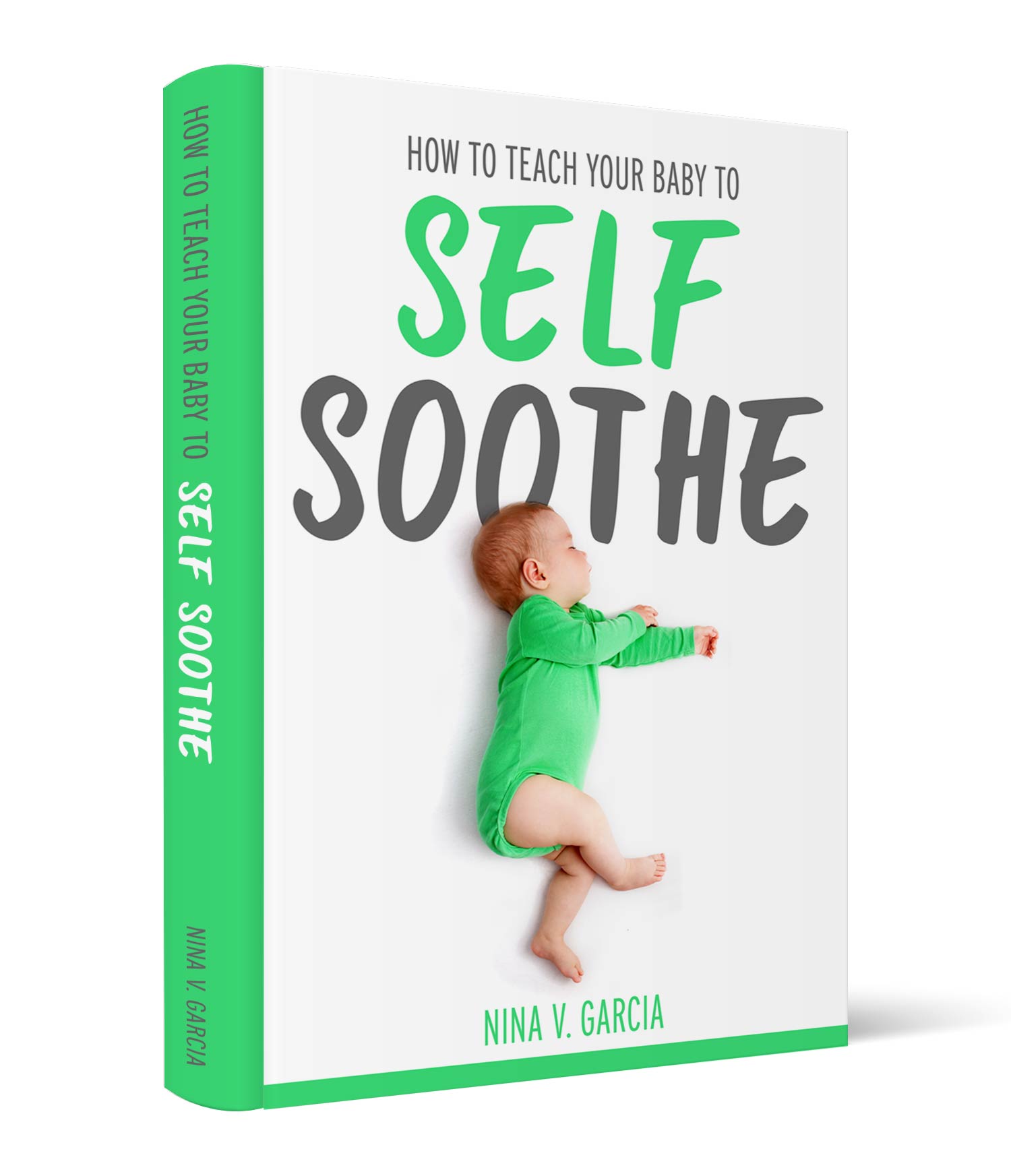Baby Suddenly Hates Diaper Changes? Here’s What to Do
It’s never easy when you see that your baby suddenly hates diaper changes. Find out why this happens and how to handle it in a gentle and effective way.

Diaper changes are tough enough—but what do you do when your baby suddenly doesn’t like them?
I wanted to keep my baby comfortable in diapers, which seemed all but impossible when he’d squirm and roll off during changes. He hated diaper changes so much that he’d start whining and inching away the minute he saw me grab the diapers and wipes. And what had started as simple fussing had morphed into a full-on screaming and wrestling match.
I needed to learn how to stop him from crying during these diaper changes—and fast. I looked for solutions to finally make them stop and, thankfully, they did, using these tips that I’ll share below. Hopefully, you’ll find them just as useful:
Table of Contents
Face your baby’s legs toward your dominant hand
I would never have thought that the direction your baby faces during a diaper change makes a difference, but boy does it ever.
Nothing is more awkward than trying to change a dirty diaper when you’re fumbling around. Instead, make sure that your baby’s bottom faces your dominant hand, while his head faces the other way.
For instance, I’m left-handed, so my baby’s legs are closer to my left hand, while his head is closer to my right. This simple tweak makes sure you’re able to use your stronger hand to clean the diaper area.
Free resource: Is your baby still not sleeping through the night? Join my newsletter and get a preview of How to Teach Your Baby to Self Soothe. This chapter is all about the mindset needed for successful self-soothing and helping your baby put himself to sleep. As one parent said about the ebook:
“I just wanted to say thank you for your book! My little one spent a week of refusing to sleep unless I held her for naps and bedtime. She was teething on top of it. I read your book and on her first night, we made it to the first 15-minute check-in before she fell asleep. That was 3 days ago. Now she doesn’t cry at all and no check-ins are necessary. I cannot thank you enough for your help and advice. Thank you thank you thank you!” -Tracy Hopewell
Hold your baby’s ankles as long as possible
Do you hold your baby’s ankles and let them go after each step of the diaper change? Try to hold onto them as long as possible while using your other hand to clean her up. This will make you more efficient and the diaper changes much quicker.
For instance, after holding her ankles up, pull the soiled diaper away, wipe her clean, and sneak a clean diaper underneath. All with one hand while your other continues to raise her by the ankles. That way, the minute you let go is when you’ve finished changing the diaper.
Sit your baby up as soon as possible
Do you notice that your baby only really cries during a diaper change when he’s lying down? If so, try sitting him up as soon as you’re able to, typically once you can slide a clean diaper beneath him.
Everything else—strapping it closed, putting his clothes back on—can be done in a sitting position. Try to cut the time he lies down by doing whatever you can when he’s sitting up. Once his upper body is upright, he just might stop crying.
Change the spot
Could your baby be tired of being changed in the same spot? Try choosing different spots to vary the experience. You might have more luck picking a different spot, especially one he already likes.
Let’s say he loves looking at the ceiling fan spin. Take your portable changing mat and change his diaper below the fan, allowing him to watch it move while you clean him up.
And get creative and out-of-the-box! See if changing on the grass in the backyard or on the floor of the living room can be enough of a novelty that he won’t cry. Work with his curiosity and desire for new experiences by varying your changing spots.
Offer “diaper change only” distraction items
One way to ease your baby’s anxiety and lessen the power struggle? Use distractions. Give her items she normally doesn’t get to use, other than during diaper changes. These don’t have to be toys, but anything she can safely hold and explore. You might offer:
- an empty wipes container that crinkles
- your old flip phone
- a rattle she only gets to hold during changes
- sensory or soft books
Distractions are especially useful if you’re trying to get rid of a diaper rash, which is enough to make her cry from the discomfort. With other items to focus on, her attention could be elsewhere other than the diaper change.
The trick is to hand these items to her right before you’re about to change her, not after she’s already fussing. Yes, it might work to calm her down, but if she’s too riled up, no toy or item will work. Your best bet is to hand her the item, be genuinely curious about how it works, and change her soon after.
Have all your changing supplies ready
With diaper changes such a challenge as it is, the last thing you need is to find items in the diaper caddy with your baby wailing and kicking. Instead, long before you even bring him to the changing pad, have everything ready:
- Open a clean diaper
- Pull several wipes out of the container
- Twist open the tub of diaper cream
- Have your distraction item nearby
- Sanitize the portable changing pad
With all your items ready to go, you can focus on him and lessen the time he has to lie on his back.
Have mini stations throughout your home
“I have a few changing stations around the house,” my friend told me. “That way, I don’t have to carry the baby all the way upstairs if she needs a diaper change.”
I thought this was brilliant, so when my baby was born, I too decided to have a few changing stations.
By scattering supplies everywhere, you have one less obstacle between you and a fresh diaper. Start by setting up your “main” station, including the changing table, the diaper pail, and most of your supplies, in the room where your baby sleeps.
Then, create mini changing stations in common areas, like the living room or family room. If your baby sleeps in your room, you might add a mini station there. Include essentials like a portable changing mat, a few diapers, wipes, hand sanitizer, and a small tube of ointment.
Expert tip
Do an inventory of your supplies in general. Whether cloth diapers or disposables, how are you holding up with supplies? Do you need to do a load of wash or order another box? Plan ahead so you’re not scrambling at the last minute.
Restock supplies after a diaper change
“I’ll do it later,” says every parent who vows to restock her diaper storage. Except with so many things to think about, we inevitably forget that we’re low on diapers until, of course, we’re scrambling for one.
The best time to restock supplies isn’t before a diaper change, but after one.
Let’s say you notice that you’re down to the last one or two diapers, or that your pack of wipes is getting pretty slim. Once your baby is changed, use that time to restock anything that’s running low. You can also empty and line the trash with a new plastic bag.
You have one less thing to worry about when you finally do need to make the next diaper change.
Expert tip
One trick is to pack your diaper bag not before you step out of the house, but after you get home from an outing. That way, you can simply leave the house ready to go, instead of packing (or forgetting to pack) on your way out.
Make diaper changes engaging
With so many diaper changes throughout the day, it’s easy to treat this task as simply that: a task to finish and get done with. Our minds are already on the next thing to do, and we end up shuffling our babies from one activity to the next.
But what if we treat diaper changes not merely as a chore, but as an opportunity to bond and connect?
These frequent diaper changes could be just what you need to slow down, smile, and talk to your baby as you change his diaper. Hold real conversations, despite his inability to respond with words. Describe what you’re doing and ask questions, allowing your face and tone of voice to do most of the “talking.”
And make diaper changes fun! Maybe you’ll sing songs like, “Put your right leg in…” as you put on his pants. Or create games like ” fast and slow,” speeding up and slowing down your actions. Maybe you simply tickle and blow raspberries on his belly.
Is he extra squirmy? Hang a mobile or hand him a special toy that he only gets to play with during diaper changes as a simple distraction. With a shift in perspective, diaper changes don’t have to be the dreaded, messy chore, but another chance to slow your pace and enjoy your baby’s company.
Have a positive experience
Diaper changes could be difficult when your emotions contribute to a negative experience. It’s especially challenging when you’ve “tried to be nice,” from singing to talking to your baby, only for her to continue crying. Rather than remaining calm, you lose your temper or are harsh with your actions.
Instead, have a positive experience—whether she cries or not.
If speeding through the steps makes you feel anxious, slow down and take your time (yup, even if she’s trying to crawl away). Make funny faces, give her a tickle, blow raspberries on her belly, or sing nursery rhymes.
Yes, it’s frustrating, and you should experience these emotions in an honest way. But part of your game plan could be to make the most of it in a positive way. Your calm and collected demeanor could be all it takes for her to follow suit.
Frequently asked questions
One common culprit is likely a baby’s newfound mobility and curiosity. It’s no coincidence that babies who suddenly can’t stand diaper changes do so right around the time they learn to crawl and are more mobile.
Diaper changes can also seem “boring” now, and he’d rather play. The last thing he wants is to sit still in the same place when there’s so much more to do and see.
Another reason is that he may be more conscious of his personal space and doesn’t like to feel contained. And finally, this can also be a sign of his growing independence as he learns to test boundaries.
Conclusion
A squirming baby needing a change can definitely test your patience. Thankfully, you now have several tips to try the next time your baby suddenly hates diaper changes. No more wrestling with your little one, friend! Now you can have calm diaper changes once again.
Get more tips:
- What Should Your Baby Wear at Night for Sleep?
- How to Take Care of a Baby Alone
- When Your Baby Cries During the Bedtime Routine
- Baby Refuses to Eat Solids? Simple Hacks for Easier Mealtimes
- 5 Reminders to Tell Yourself When Your Baby Only Wants Dad
Don’t forget: Join my newsletter and get a preview of How to Teach Your Baby to Self Soothe below—at no cost to you:

